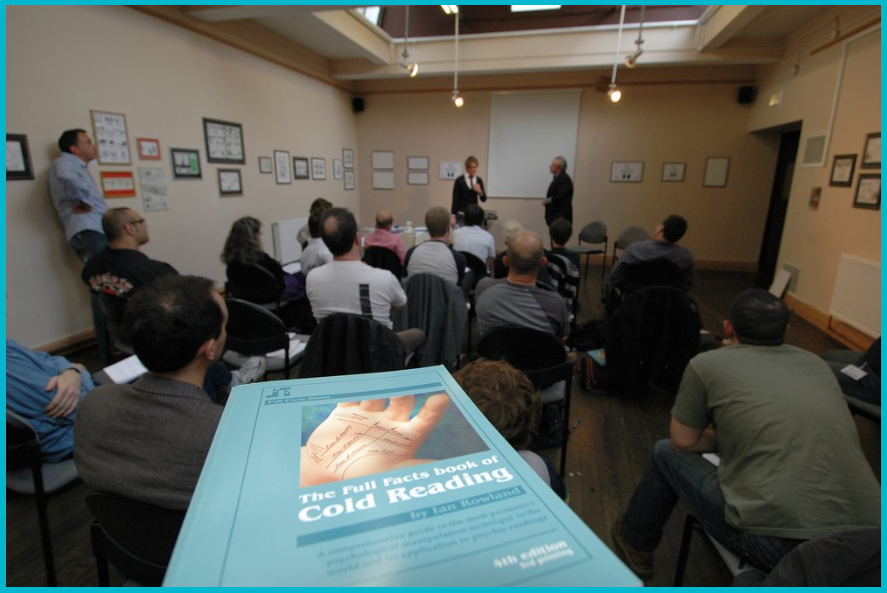Most Common Cold Reads: How They Work and Why People Believe Them
Most Common Cold Reads: How They Work and Why People Believe Them
Cold reading is the art of making statements that seem deeply personal, even when they are not. Fortune tellers, psychics, and even sales professionals often use these techniques to sound insightful. To understand the skill, it helps to look at the most common cold reads.
In this article, we’ll break down the most common cold reads, explain why they work, and show how they appear in everyday life.
What Are Cold Reads?
Before exploring the most common cold reads, let’s define the term. Cold reading is a communication technique that makes vague or general statements sound specific. The listener naturally interprets them in a way that feels accurate.
For example: “You sometimes feel you’ve not lived up to your potential.” Almost everyone will agree, which makes it feel personal.
The Most Common Cold Reads Explained
Here are some of the most common cold reads you’ll encounter, whether in psychic readings, sales pitches, or casual conversations.
1. The Barnum Statement
“You have a strong need to be liked, but you can be critical of yourself.”
This is one of the most common cold reads because it applies to almost everyone.
2. The Rainbow Ruse
“You are outgoing in social situations, but you also enjoy quiet time alone.”
By covering both sides of a trait, this statement always feels true.
3. The Jacques Statement
“You’ve become more confident as you’ve grown older.”
A universal truth, which is why it’s among the most common cold reads.
4. The Lucky Guess
“I sense a recent change in your work or personal life.”
High probability makes this guess sound insightful.
5. The Push Statement
“I’m seeing a connection with the name J—maybe John, James, or Jennifer?”
If the first guess fails, the reader adjusts, making it look like accuracy.
6. The Fuzzy Fact
“As a child, you sometimes felt misunderstood.”
This is another of the most common cold reads, since nearly everyone relates.
7. Flattering Insight
“You’re the type of person who gives a lot to others, sometimes more than they deserve.”
Flattery framed as observation is always powerful.
8. The Vanishing Negative
“You’re not the kind of person who lets people take advantage of you.”
By saying what someone is not, the reader sneaks in a flattering description.
9. Childhood Memory
“I sense that you had a special bond with a grandparent.”
Family ties are common, making this one of the most common cold reads.
10. Self-Fulfilling Prediction
“You’ll soon find new energy and clarity about your future.”
This works because people subconsciously make it come true.
Why the Most Common Cold Reads Work
The most common cold reads succeed because of simple psychology:
Selective memory – People remember the hits and forget the misses.
Personal interpretation – Vague words are shaped into specific meaning.
The desire to feel understood – Everyone wants to believe someone “gets” them.
The Most Common Cold Reads in Everyday Life
You don’t have to visit a psychic to hear the most common cold reads. They show up in:
Sales: “I know you value quality over quick fixes.”
Management: “You’re someone who prefers clarity before making decisions.”
Dating: “You’re loyal, but you don’t trust easily.”
These statements sound authentic because they are rooted in universal truths.
Ethical Use of Cold Reads
While the most common cold reads can be used to persuade, they can also be abused. Used ethically, they can build trust, spark conversation, and create empathy. Used manipulatively, they can exploit vulnerable people.
The key is intention. When applied positively, the most common cold reads are not tricks they’re tools of connection.
The most common cold reads aren’t supernatural they’re psychological. From Barnum statements to Rainbow Ruses, these techniques work because they align with universal human experiences.
By understanding the most common cold reads, you can spot them in action, protect yourself from manipulation, or even use them ethically to strengthen communication and rapport.





